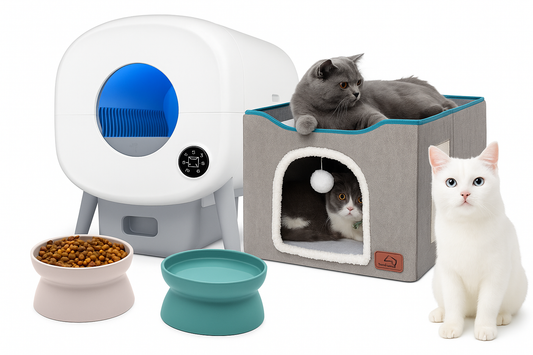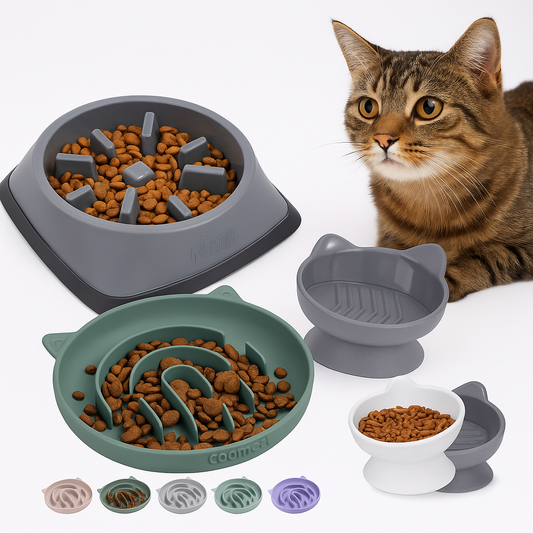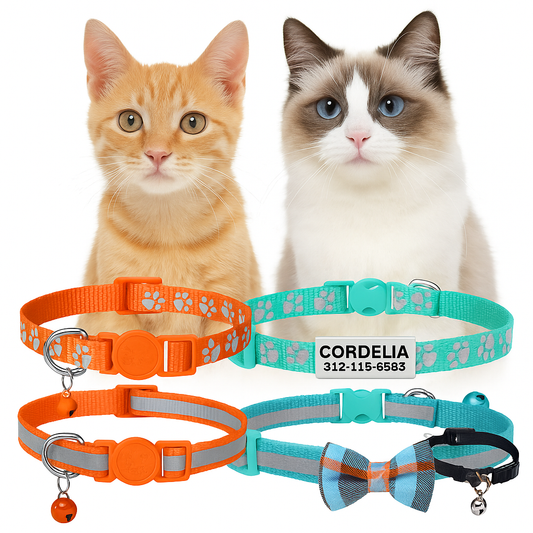
7 Reasons Your Cat Is Obsessed With Boxes
If you’ve ever bought your cat a fancy toy only for them to play with the box… you’re not alone.
You lovingly pick out the latest feather wand or interactive laser toy, only to watch your cat walk right past it and dive headfirst into the cardboard box it came in. Classic.
So, what is it about boxes that cats find so irresistible? Is it the smell of cardboard? The crinkly sound? The enclosed mystery? The answer is: all of the above — and more. If you’ve been scratching your head wondering why cats love boxes, we’re diving deep into the weirdly wonderful world of cat behavior to unpack (pun very much intended) their obsession.
Let’s explore the seven biggest reasons your feline can’t get enough of the humble box.
1. Boxes Mimic a Cat’s Natural Den Environment
To understand your cat’s box obsession, you’ve got to think like a cat. In the wild, felines are both predators and prey. That means they need safe, enclosed spaces to rest, hide, and observe without being seen.
A cardboard box is the perfect stand-in for a natural den. It has high walls, one opening, and enough room to curl up — ideal for scanning the environment while staying hidden.
Your cat isn’t being antisocial. They’re following deeply rooted survival instincts. To them, a box is a mini fortress. Whether it’s a shipping box or a shoebox, it becomes an instant cat hiding spot and observation deck rolled into one.
Some cats will even stash toys in their favorite boxes, creating their own private stash zone. You might not see them for hours — and that’s the point. They feel secure, and that’s invaluable in a cat’s world.
2. Cardboard Keeps Heat In – the Perfect Cat Cocoon

Here’s a cozy truth: cats love warmth.
They’re heat-seeking missiles, always napping in sunbeams, laptops, or freshly worn laundry. Cardboard is surprisingly good at insulating, which means it traps body heat. Once your cat curls up inside, it quickly becomes a toasty little cave that radiates warmth.
It’s not just cute — it’s practical. Cats naturally seek temperatures around 86°F to 97°F for optimal lounging. Your living room might be chillier than they like, so that cardboard box? It's a DIY sauna.
Ever notice how your cat chooses the smallest, most tucked-away box possible? It’s not just because it’s adorable when they squish themselves in there — it’s because it makes them feel extra cozy.
3. Enclosed Spaces Reduce Feline Anxiety
Let’s talk cat stress.
Cats are creatures of comfort, and change — even minor — can trigger anxiety. New people, strange smells, rearranged furniture… it all adds up.
That’s where boxes come in.
There’s a fascinating study from Utrecht University that looked at shelter cats and stress levels. The results? Cats with access to hiding boxes were significantly less stressed than those without.
Why? Because enclosed spaces like boxes help cats self-regulate. They block out visual stimuli, offer control over their environment, and make cats feel safe. It’s not just about hiding — it’s about healing.
So next time your cat’s feeling overwhelmed (or you’re introducing a new fur sibling), a simple box can go a long way. It’s like handing them a cozy panic room that smells like them. Win-win.
If you're looking to provide your feline friend with a cozy hideaway, creating a DIY cat tent is a fun and cost-effective project. Check out our guide on DIY Cat Tent Projects. This resource offers various designs to suit both your crafting skills and your cat's preferences.
4. Boxes Give Cats a Place to Pounce and Surprise
Remember: your kitty is a miniature predator. And predators love ambush.
Cardboard boxes provide the perfect launchpad for stalking, hiding, and pouncing. They can observe their “prey” (you, a toy, the family dog) from the shadows, then leap out with ninja-like stealth.
This taps into your cat’s predator-prey play cycle, which is crucial for physical and mental stimulation. A box isn’t just a place to nap. It’s a hunting blind. A jungle gym. A military base of operations.
In other words, it’s fun.
Want to turn it up a notch? Cut holes in multiple sides of the box and toss in a feather wand or mouse toy. Instant enrichment zone.
5. Boxes Trap Their Scent, Which Feels Safe and Familiar
Cats have scent glands in their cheeks, paws, and flanks — and they use them to mark their territory.
Once they rub up against a box or sleep in it, their scent saturates the space. That scent containment makes the box feel extra personal and comforting. It’s like their own private apartment — one that smells like them.
This scent marking is also why cats tend to return to the same box repeatedly. It smells safe, and in cat-world, scent equals ownership and security.
Think of it as their favorite hoodie — comforting, familiar, and something they want to burrow into over and over.
6. Cats Love Scratching, Chewing, and Clawing Cardboard

Let’s not overlook the texture factor.
Cardboard is irresistible to cats because it's slightly soft, a little crunchy, and easy to shred. That makes it the perfect outlet for scratching and chewing. For cats, that tactile feedback is super satisfying — kind of like popping bubble wrap for humans.
If your cat starts ripping apart their box, don’t worry. It’s not destruction; it’s enrichment. They’re engaging with their environment using their paws, claws, and teeth — all normal parts of cat behavior.
Just make sure to swap out old boxes occasionally to prevent ingestion of bits (and to keep things fresh and exciting!).
Pro tip: Place an old T-shirt in the bottom of the box to give it extra texture and scent — it might become your cat’s new favorite nap spot.
7. Because… It’s a Box!
Sometimes, the answer is simple: cats like boxes because boxes are awesome.
They’re blank slates. A box can be a bed, a hideout, a play zone, or a chew toy. And each new box that enters your home is a fresh adventure.
To your cat, a box is a multipurpose throne that hits all the right notes: safe, warm, textured, private, and fun.
And best of all? It’s often free.
Funny Cat Box Moments 😹
Let’s be honest — the best part of cat-box behavior is watching it unfold.
Cats squeezing into boxes three sizes too small, diving into empty tissue boxes, or sitting majestically in fruit crates like royalty. If you haven’t lost hours to watching cat box compilations… are you even a cat person?
Want to see more? Check out our favorite cat box moments on Capnip’s Instagram and share your own! We love seeing your kitties in full cardboard glory.
Got a funny photo? Tag us using #CapnipCatsInBoxes — we might feature you in our next post!
📚 Scientific Insight: Utrecht University Study on Hiding Boxes and Feline Stress
Understanding the profound impact of environmental enrichment on feline welfare, researchers at Utrecht University conducted a pivotal study to assess how providing hiding boxes affects stress levels in shelter cats. The study, titled "The effect of a hiding box on stress levels and body weight in Dutch shelter cats: a randomized controlled trial," offers valuable insights into feline behavior and well-being.
🧪 Study Overview
In this randomized controlled trial, 23 newly admitted shelter cats were divided into two groups: one provided with a hiding box and the other without. Over a 12-day period, researchers monitored behavioral stress using the Cat-Stress-Score (CSS) and tracked changes in body weight. The findings revealed that cats with access to hiding boxes exhibited a more rapid decrease in stress levels, reaching a lower CSS steady state seven days earlier than their counterparts without boxes. This suggests that hiding boxes serve as a significant stress-reducing tool for cats adapting to new environments .
🧠 Implications for Cat Owners
The study underscores the importance of providing hiding opportunities for cats, not just in shelters but also in domestic settings. Enclosed spaces like boxes offer cats a sense of security, helping them cope with environmental stressors. For cat owners, this means that incorporating hiding spots—be it simple cardboard boxes or specially designed cat furniture—can significantly enhance their pet's comfort and well-being.
By acknowledging and catering to this innate behavior, we can create more harmonious and stress-free environments for our feline companions.
Looking for the Ultimate Box Upgrade?
Sure, cats love cardboard. But what if you could offer them all the boxy joy — with extra comfort, durability, and style?
Catsco and Casa Gato are cat boxes reimagined — modern hideouts designed to keep your kitty cozy, curious, and totally obsessed.
✅ Enclosed for safety
✅ Made from pet-friendly materials
✅ Designed with feline instincts in mind
If your cat deserves a box that’s more than just packaging, these are a purr-fect upgrade.
Bonus: How to Create the Ultimate DIY Cat Box Setup
Want to DIY your way to feline happiness? Try these quick ideas using things you already have at home:
-
The Maze Box: Tape together several boxes with tunnels and multiple entrances. This creates a fun obstacle course.
-
Scratch & Hide Combo: Line one box with old cardboard strips vertically for a scratching post effect. Instant fun!
-
Sensory Surprise: Add cat-safe herbs like silvervine or valerian root to the bottom of the box for extra intrigue.
-
Nesting Box: Add a soft fleece blanket, and you’ve got the ultimate nap pod.
And yes, it can be cute enough to keep out in the living room.
Final Thoughts: Boxes Are Cat Gold
So, why do cats love boxes? It comes down to safety, warmth, fun, and instinct. Boxes satisfy deep-rooted feline needs while also offering hours of entertainment (for both of you). They're the ultimate combination of cozy and cool.
Next time your cat ignores that pricey toy and jumps straight into the recycling, remember — they know what they’re doing. In the world of your feline, a cardboard box isn’t trash. It’s treasure.



